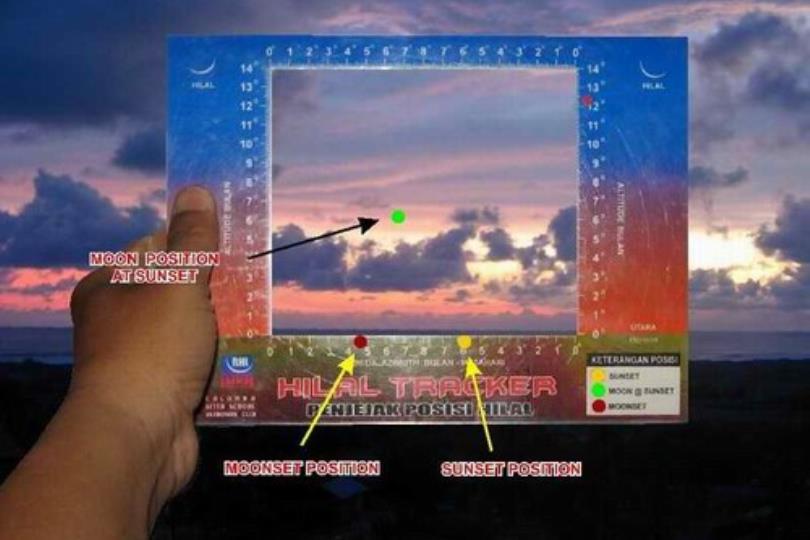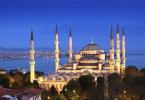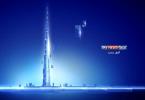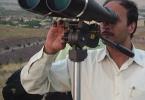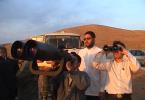Praise be to Allah, the Creator of the Universe, and peace and salutations on His chosen messenger.
Astronomical calculations show that Eid-El-Fitr for the 1432 (Hijri), if based on sighting of the moon as a requirement, will In Sha Allah, be on August 31st in most of the Muslim countries.
It is worth recalling that most Muslim countries started Ramadan on August 1st; consequently, they will – as per the tradition – be on the look-out for the new crescent on Monday, August 29th. On that day, however, it is impossible to see the new crescent, as the moon sets before the Sun in the vast majority of the world, including North and central Asia, the Emirates, Qatar, Bahrain, Kuwait, North and Central Saudi Arabia, Iraq, Syria, Jordan, and Palestine, and North Africa. In the rest of the Islamic world, the moon will set very shortly after the Sun, which makes it impossible to sight, whether by naked eye or with a telescope.
Consequently, we can state with utmost confidence that it is impossible to sight the moon from any place in the Muslim world, by the naked eyes or with telescopes. It is, however, possible to see the crescent with the aid of telescopes from Southern Africa and from South and Central America; the only possible eye sighting of the crescent is from South America.
Muslim countries which started Ramadan on August 1st and do not accept sightings from faraway places should thus complete 30 days of fasting, and Eid will therefore be on Wednesday, Aug. 31st.
For countries which do not require the physical sighting of the new crescent and decree the start of the Islamic month if the Moon sets after the Sun or accept visual-aid observations from faraway places, Eid will be on Tuesday August 30th.
For countries which started Ramadan on Tuesday August 2nd, Eid will also be on Wednesday Aug. 31st, since the new crescent will be easy to sight on Tuesday 30th of Aug. (their 29th day of Ramadan).
The Islamic Crescent Observation Project (ICOP) appeals to the authorities of the Muslim countries to carefully and critically examine all reported sightings of the crescent on Monday Aug. 29th. Indeed, in all astronomical data recorded since the Babylonia era to our present days, no crescent has ever been sighted in similar conditions, whether by naked eyes or with the aid of a telescope. Announcing a sighting on that day is tantamount to telling the world that we have people with better eye sight (sharper and more sensitive) than the largest telescopes in the world. It would be also an invitation to the world to use these moon-sighting witnesses for all astronomical observations rather than pouring millions of dollars into observatories or even sending the telescopes like Hubble into space. Accepting such reports/ testimonies would be telling the world that we totally disrespect science and reason.
ICOP also stresses the fact that if the moon sets two minutes after the sun, it is essentially as if it actually sets with the Sun. This is so because the time of sunset is defined as when the sun’s upper edge is at the horizon, and if the center of the moon sets two minutes later, the bottom edge of the crescent must already be tangent to the horizon.
It is also worth highlighting the fact that the Sultanate of Oman, which takes crescent issues very seriously and starts Hijri months only through confirmed crescent sightings, officially announced on Aug. 20th that no attempt to sight the crescent will be conducted on the 29th of Ramadan (Monday Aug. 29th) because astronomical calculations confirm that sighting the moon on that day throughout the Sultanate is impossible. Indeed, in some areas of the country, the moon sets with the Sun, and in others the moon sets at most 5 minutes after the Sun. In these conditions, it is impossible to sight the moon using any means. The Sultanate officials thus correctly concluded that Wednesday 31st of August will be the day of Eid-El-Fitr. This announcement from the Sultanate shows the authorities’ great attention and respect for both the judicial and scientific aspect of this issue.
For those interested in more detailed information, the table below gives the time-lag (time between sunset and moonset) and moon age (since conjunction) in various locations on Aug. 29:
To appreciate the above data, one needs to recall that the shortest time-lag that a crescent was seen by naked eye was 29 minutes (on September 20, 1990 in Palestine), and the youngest moon to have been seen by naked eye was 15 hours and 33 minutes (on the 25th of February 1990 in the United States). Other parameters that affect the sighting of the crescent moon are the proximity of the crescent to the Sun at the time of sunset and its height above the horizon.
To find out more about crescent observations for Islamic months and about ICOP, please visit: www.icoproject.org. ICOP was established in 1998 and has more than 450 members, including many scientists interested in Islamic Astronomy (crescent observations, Islamic calendar, prayer times, etc.).
We encourage anyone who is interested in these topics anywhere in the world, to join ICOP and help in its activities.
Mohammad Odeh,
ICOP President, for the Administrative Board
Translated by: Omar Bouderdaben.
